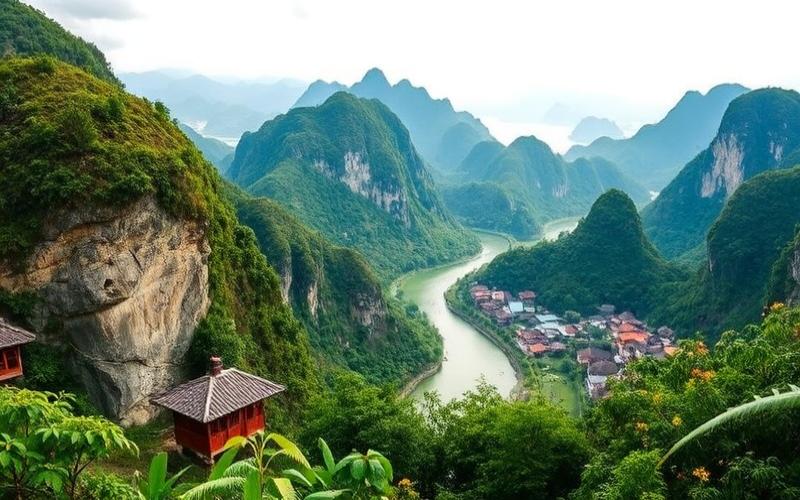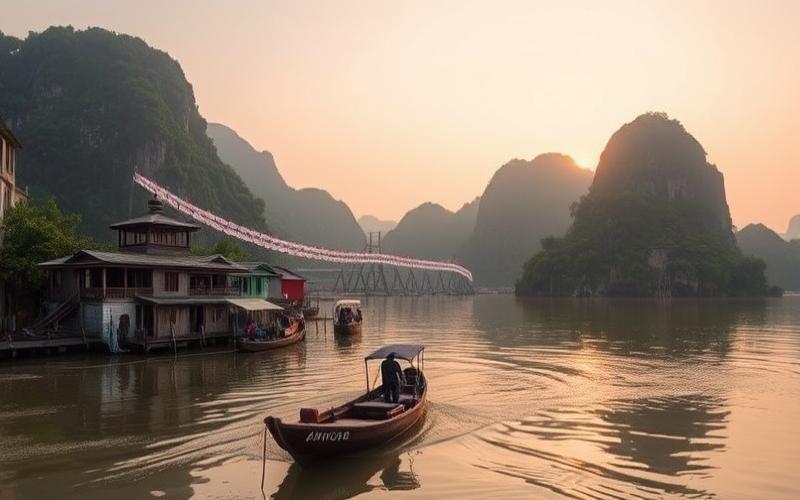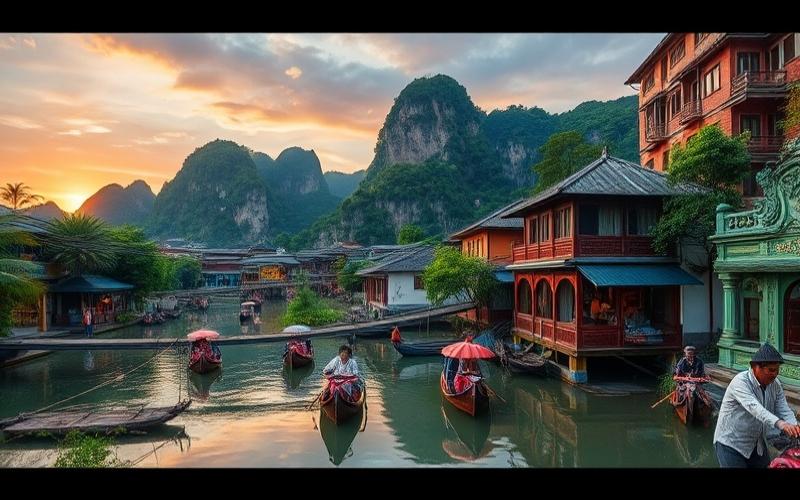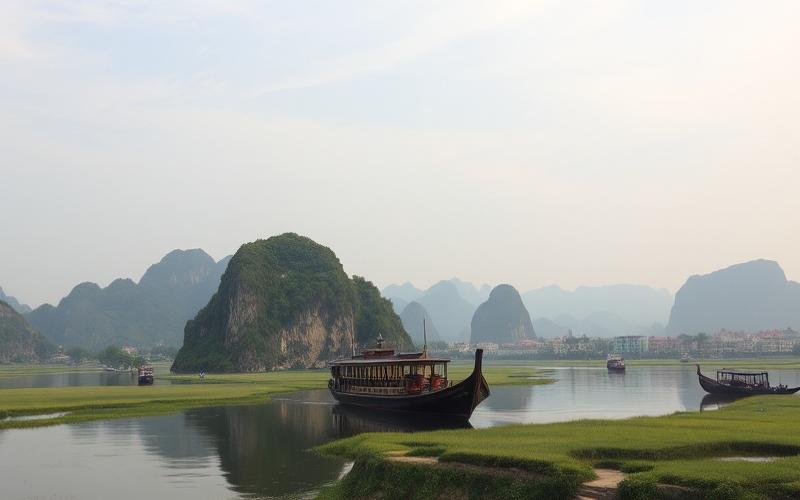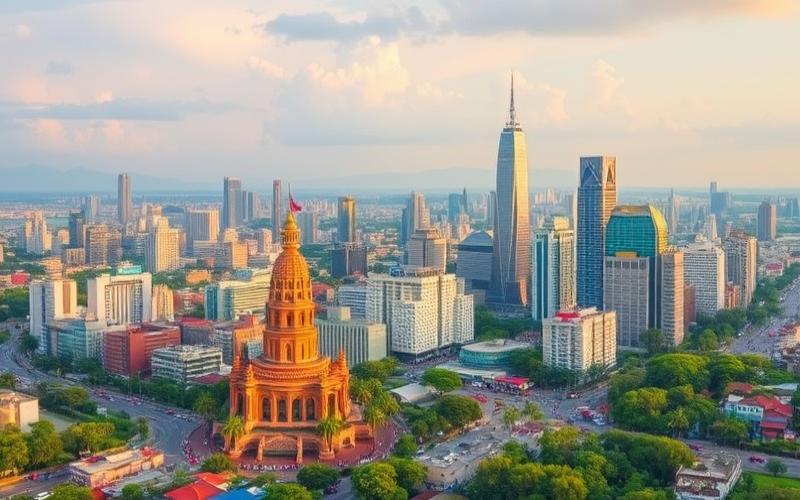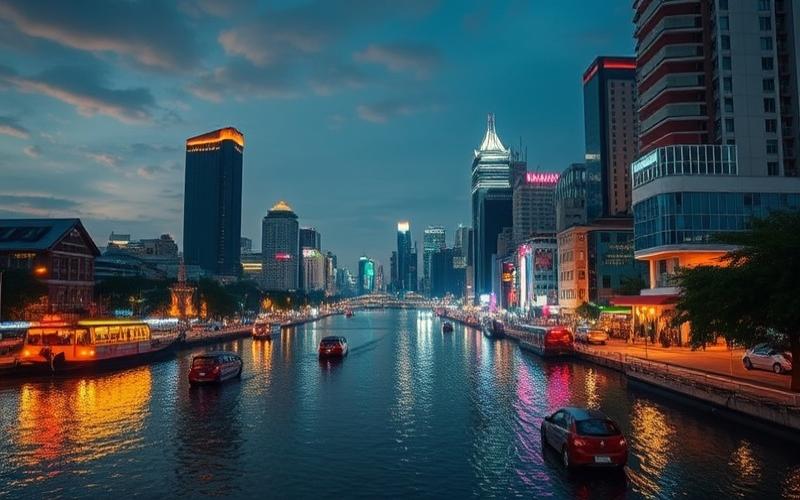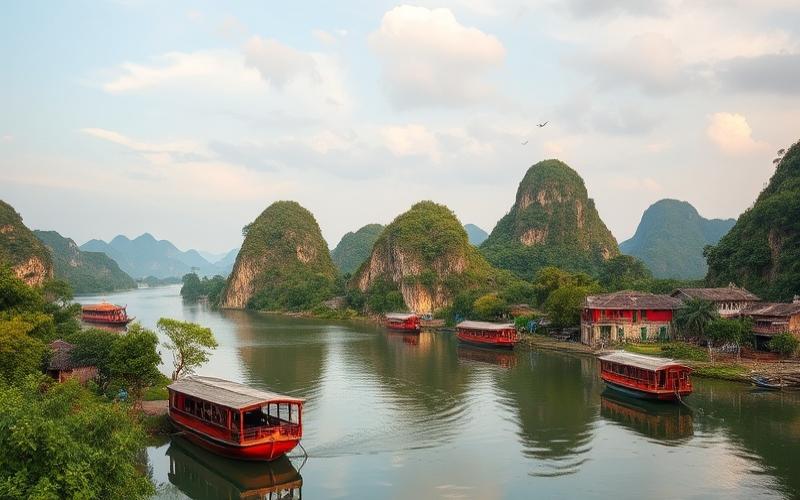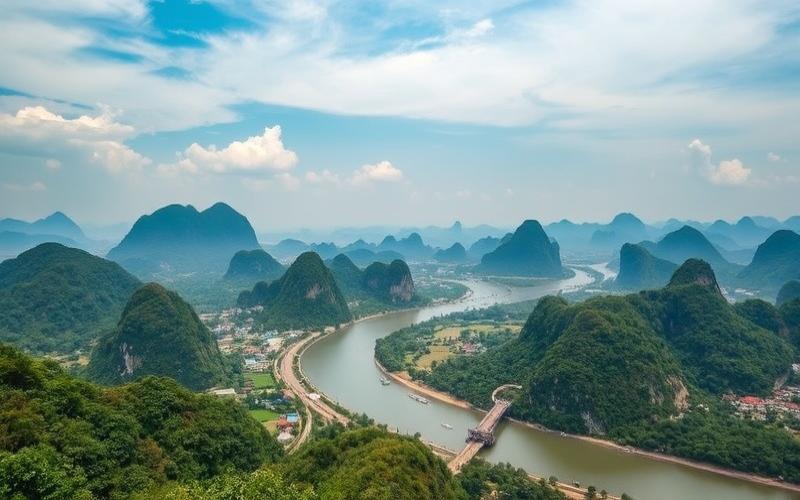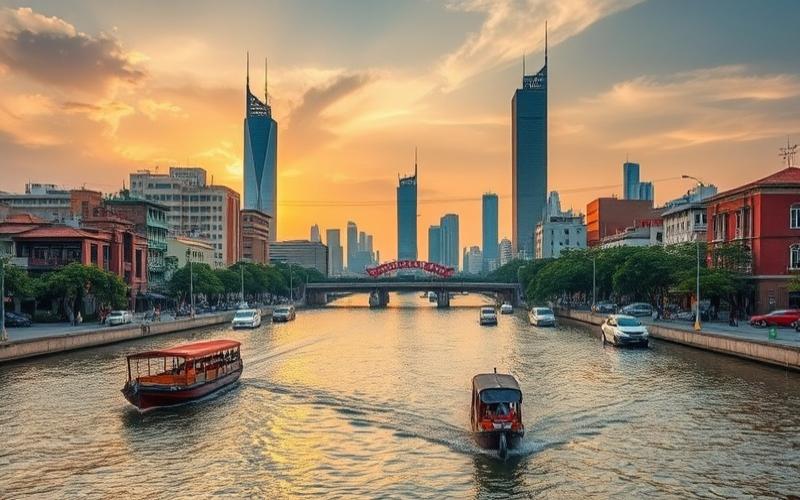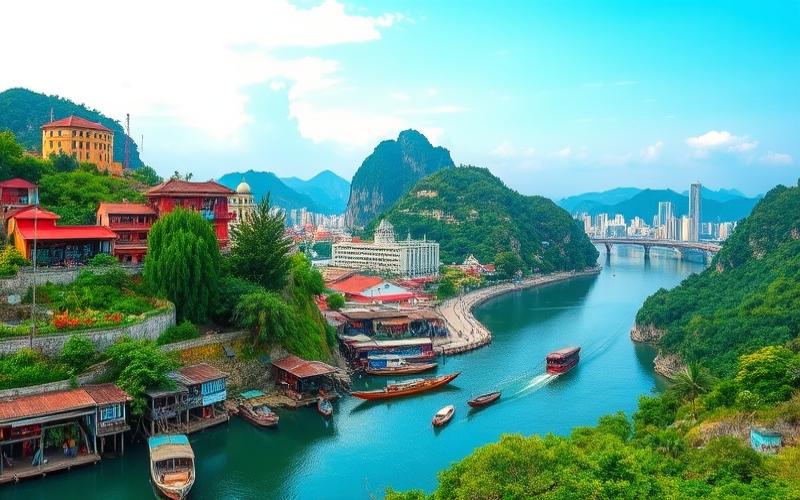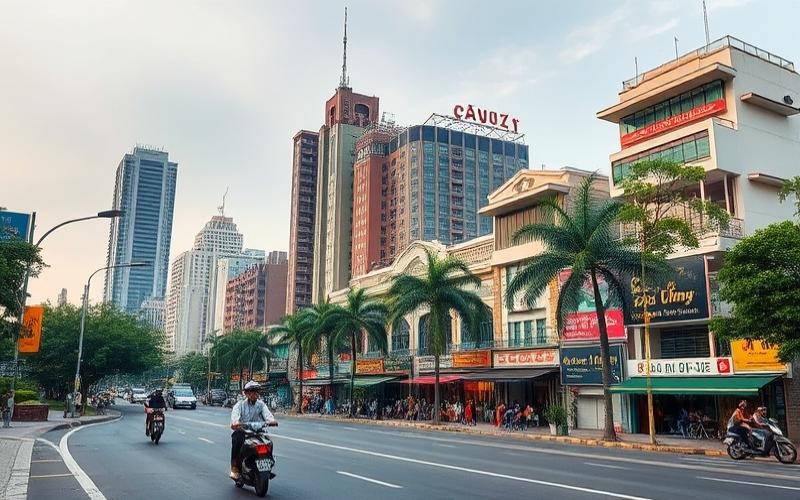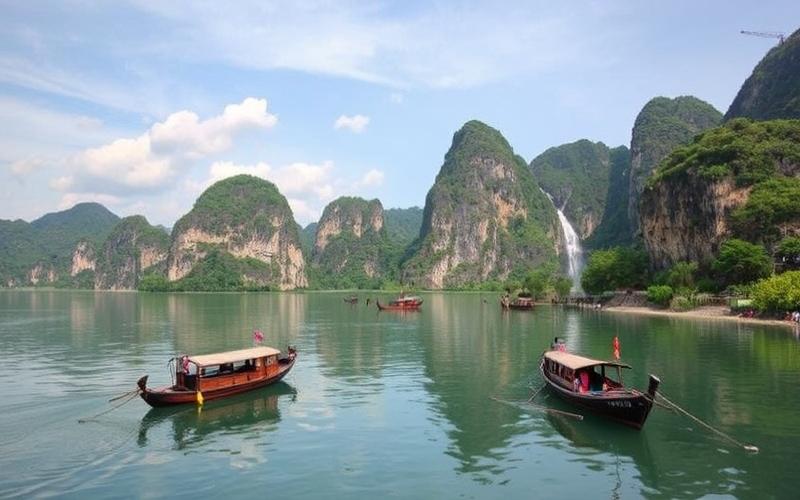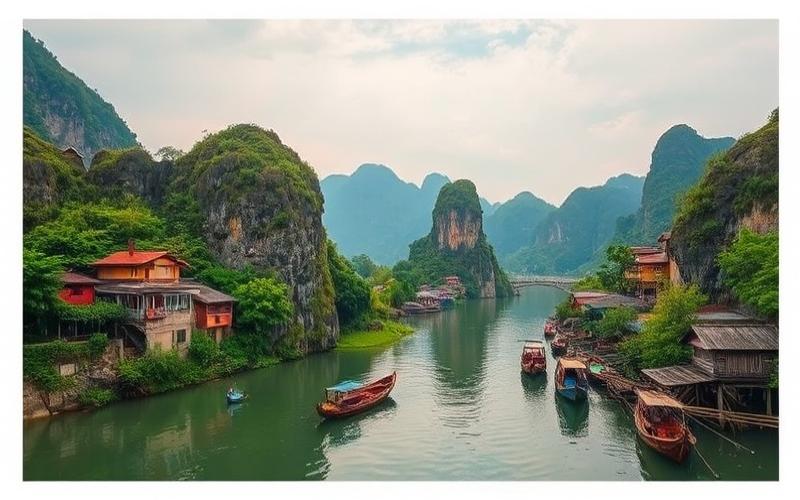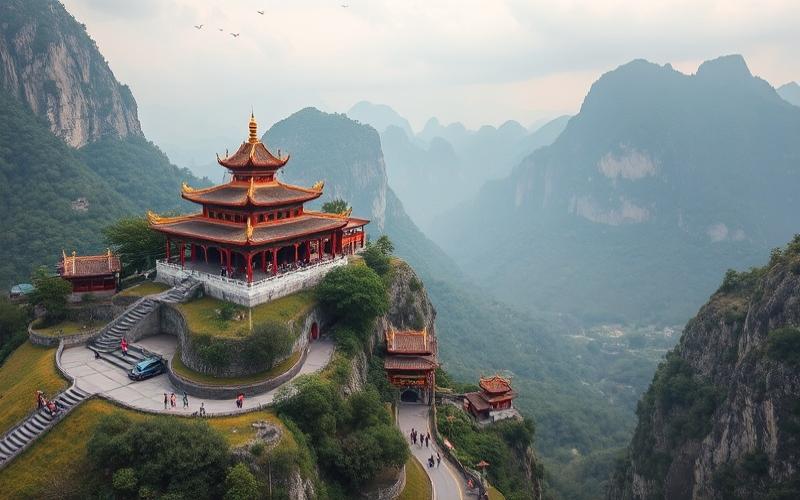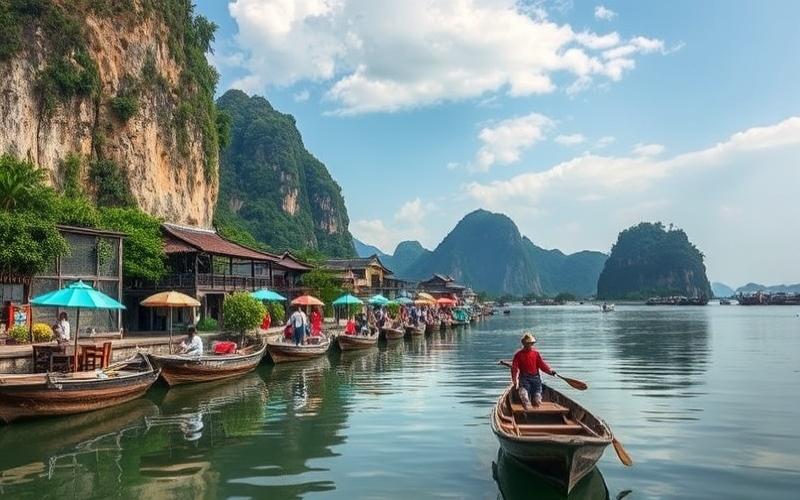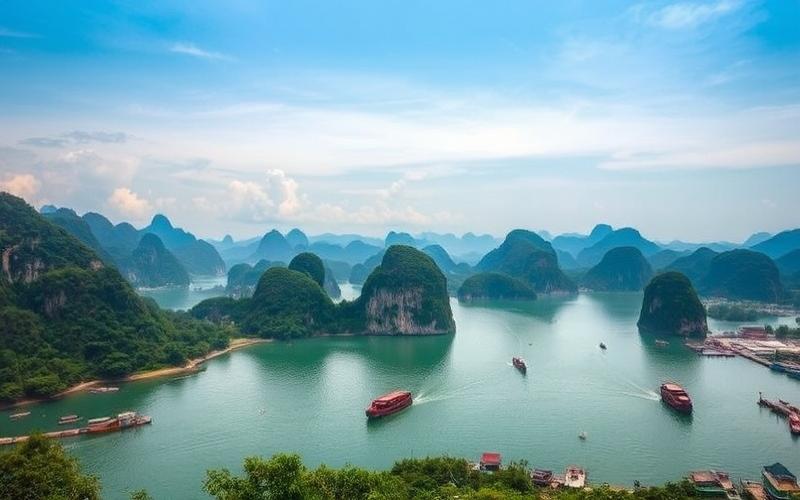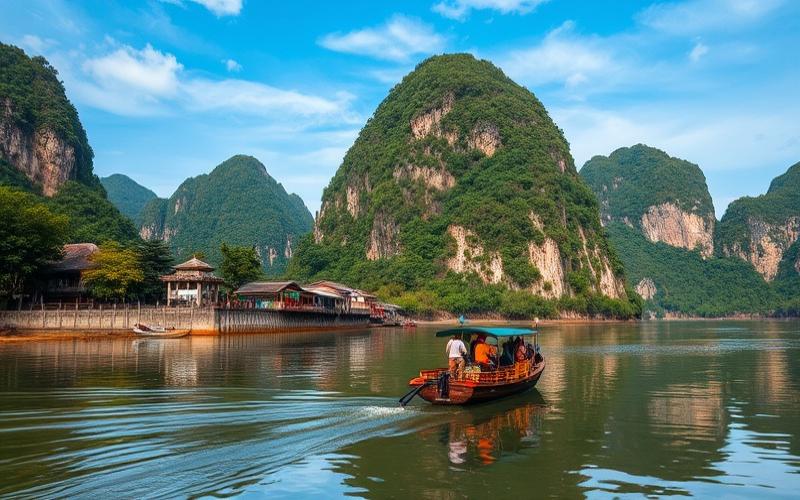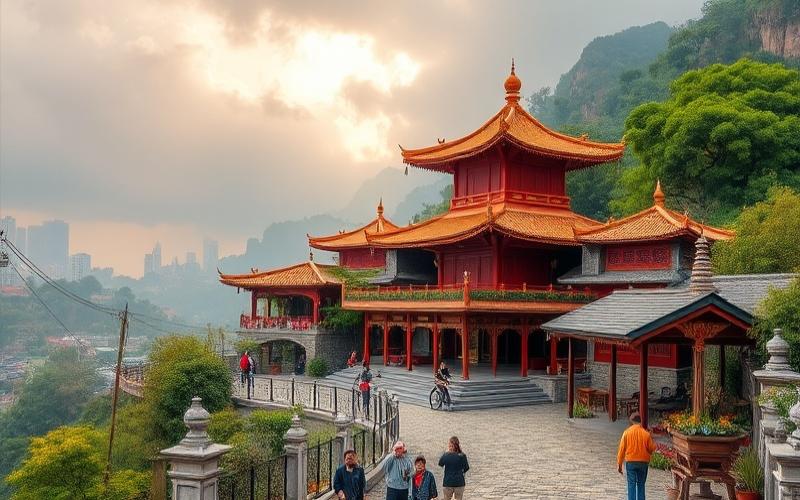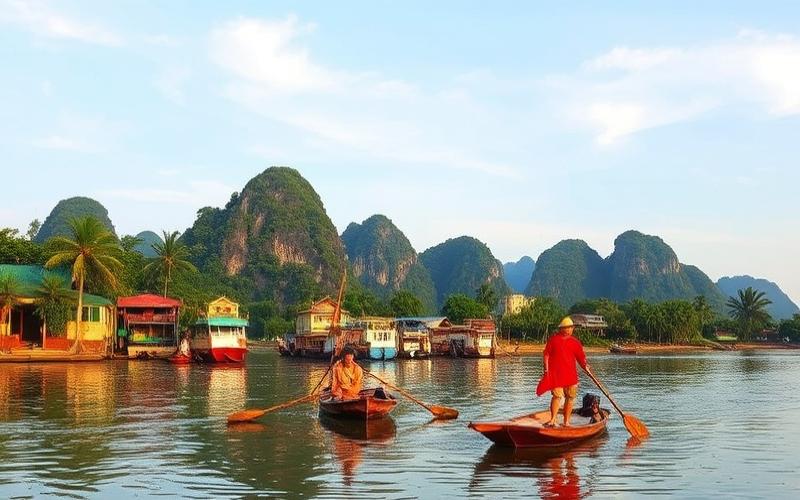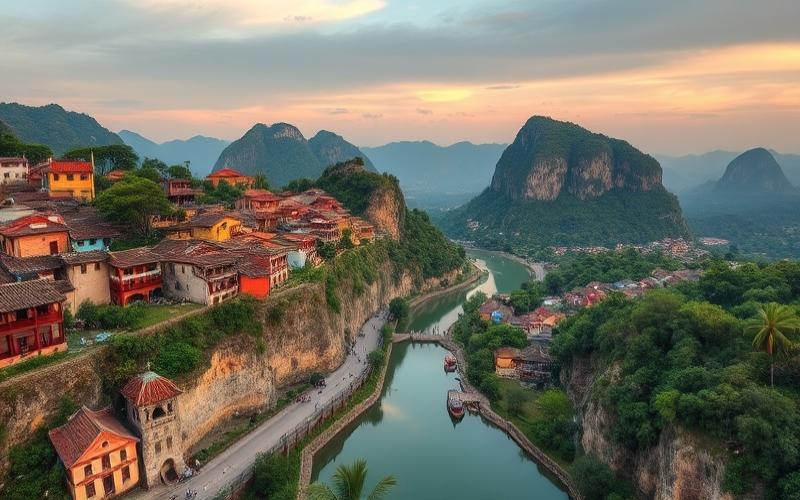
 Published on and written by Cyril Jarnias
Published on and written by Cyril Jarnias
Acquiring Agricultural Land in Vietnam
Acquiring agricultural land in Vietnam represents a fascinating opportunity in the era of globalization and economic expansion, a rapidly growing market offering countless possibilities.
However, it is essential to thoroughly understand the complex legal framework regulating the purchase of such properties in this Southeast Asian country.
This article aims to enlighten investors about current legal regulations, acquisition procedures, and conditions to follow for making a well-informed investment, while navigating through Vietnamese cultural and legal subtleties.
Overview of Vietnam’s Agricultural Land Market
Analysis of Current Trends in Vietnam’s Agricultural Land Market
The agricultural land market in Vietnam is characterized by appreciation and transformation dynamics, driven by agribusiness growth, export ambitions, and structural changes in the sector.
Most Sought-After Regions
- Mekong Delta: known for rice and tropical fruit production, it’s the country’s primary agricultural region.
- Central Highlands (Tây Nguyên): attractive for coffee, pepper, and rubber cultivation.
- Northern Region (Hanoi, Hai Duong, Bac Giang provinces): specialized in quality vegetables and fruits, experiencing strong development.
Factors Influencing Prices
- Soil Quality: Fertile lands in the Mekong Delta and Central Highlands are particularly sought after, driving prices upward.
- Accessibility: Proximity to transport routes, export ports, and modern infrastructure (roads, irrigation) is a decisive criterion for investors.
- Land Regulations: Recent changes in legislation, aiming to clarify property access and facilitate title transfers, influence land liquidity and valuation.
- Urban Pressure: Expansion of major cities (Ho Chi Minh City, Hanoi) increases conversion of agricultural land to urban use, raising prices in peripheral areas.
Price Evolution and Availability: Recent Statistics
| Year | Average Agricultural Land Price (USD/m²) | Annual Variation (%) | Availability (%) |
|---|---|---|---|
| 2020 | 2.5 | +5 | 100 |
| 2023 | 3.1 | +8 | 92 |
| 2025* | 3.5-4.0 | +10 | 88 |
*Estimate based on current trends and sector projections.
- Price growth is particularly marked in peri-urban regions and areas with high export potential.
- Availability of agricultural land is gradually decreasing due to land pressure and urbanization.
Market Challenges
- Changing Land Regulations: Evolving laws on property and land transfers, with an announced merger of the Ministries of Agriculture and Environment, creates uncertainty for investors and operators.
- Growing Demand for Urban Development: Accelerated conversion of agricultural land to buildable plots, especially around major cities, reduces supply and increases speculation.
- Limitations of the Agricultural Model: Dependence on cheap labor and inputs is reaching its limits, requiring deep shifts toward higher-value crops and sustainable agriculture.
- Environmental Challenges: Soil erosion, pollution, water management, and climate change adaptation are becoming major issues.
Impact of Foreign Investment and Economic Opportunities
- Foreign investment, particularly Asian (China, Korea, Japan), continues to grow, mainly through agricultural joint ventures, acquisition of concessions, and funding of modern infrastructure (irrigation, processing, logistics).
- Foreign investors bring capital, technologies, and open export outlets, but intensify competition for land access.
- For local and international buyers, opportunities focus on:
- High-value-added sectors (quality rice, tropical fruits, premium coffee).
- Regions benefiting from modernized infrastructure and easy access to export markets.
- Agricultural projects integrating sustainability and industrial processing.
Key Takeaways
- The Vietnamese agricultural land market is undergoing rapid transformation, with price increases supported by domestic and foreign demand.
- The most attractive regions combine fertility, accessibility, and export potential.
- Regulatory and environmental challenges force stakeholders to rethink their strategies.
- Foreign investment energizes the sector but increases pressure on land availability and competition.
Key Trend:
The agricultural land market in Vietnam is moving toward increased valuation but faces supply scarcity and major structural challenges, encouraging innovation and upscaling.
Good to Know:
The agricultural land market in Vietnam shows an upward dynamic, particularly in the Mekong Delta and Red River regions, where soil quality and accessibility are key attraction factors. According to recent statistics, agricultural land prices have increased by an average of 10% over the past five years, due to growing demand for urban development and improved infrastructure. Land regulations, often evolving, pose a challenge for buyers, making caution and due diligence essential. Foreign investment significantly influences the market, offering economic opportunities to buyers, especially in sustainable farming practices and agritourism. However, investors must navigate a complex legal framework, where foreign ownership laws change regularly, while taking advantage of opportunities offered by government development plans to ensure long-term profitability.
Understanding the Legal Framework for Buying Agricultural Land
The purchase of agricultural land in Vietnam is strictly regulated by law, with significant restrictions for foreigners. The essential points are as follows:
Land Ownership and Usage Rights
- All land in Vietnam belongs to the state: neither locals nor foreigners can own the land itself.
- Individuals and companies only have land use rights (LUR), whose duration and terms are defined by law.
- Foreigners cannot purchase agricultural land or vacant land in their own name.
Legal Restrictions for Foreigners
- Purchase of vacant land or agricultural land: total prohibition for foreigners.
- Foreigners can only acquire certain real estate properties (new apartments, houses in approved projects), never the underlying land.
- Only Vietnamese nationals can apply for land use rights for agricultural land.
| Type of Land / Property | Accessible to Foreigners? | Terms / Limits |
|---|---|---|
| Agricultural Land | No | Inaccessible |
| Vacant Land (outside real estate projects) | No | Inaccessible |
| New Apartment (approved project) | Yes | Max. 30% of a building, 50 years |
| Single House (approved project) | Yes | Max. 250 units/neighborhood, 50 years |
Mechanisms Used by Some Foreign Investors
- Vietnamese Nominee: acquisition through a local relative or partner, a risky practice not legally recognized.
- Creation of a Vietnamese Company: a foreign-capital company can obtain land use rights in certain cases, particularly for investment projects, but under strict conditions.
Duration and Renewal of Land Leases
- Usage rights (leases) are generally granted for a maximum duration of 50 years, sometimes up to 70 years for major projects.
- Possibility of renewal, subject to approval by local authorities.
- The government is considering extending some leases to 99 years in special economic zones.
Administrative Procedure (for Eligible Nationals and Companies)
- Application for land use right certificate (“Red Book”).
- Project validation by competent local authorities.
- Signing of a notarized contract and registration with the cadastral service.
- Payment of applicable fees and taxes for the transaction.
Concrete Example:
A foreign investor wishing to develop an agricultural operation must:
- Create a Vietnamese company (100% or joint venture).
- Obtain approval of their project by provincial authorities.
- Sign a land lease contract with the state for a determined duration (generally 50 years).
- Comply with all obligations regarding environment, taxation, and rural development.
Common Challenges and Risks
- Administrative complexity and slow procedures.
- Legal insecurity when using nominees.
- Risks of non-renewal of the lease at expiration.
- Need to consult local experts (lawyers, notaries, accredited agencies).
Official Resources and Assistance
- Ministry of Natural Resources and Environment (MONRE).
- Cadastral and land services of Provincial People’s Committees.
- Embassies and foreign chambers of commerce in Vietnam.
- Law firms specialized in Vietnamese land law.
Good to Know:
In Vietnam, the purchase of agricultural land by foreigners is subject to strict restrictions, as they cannot own the land but can only obtain land leases, generally for a maximum duration of 50 years, renewable. Buyers must obtain authorization from the local government and comply with laws such as the 2013 Land Law, which regulates land ownership rights and lease transfer conditions. The administrative process involves submitting files to various land services and may include an environmental assessment. Preemptive rights of local farmers can also pose a challenge during transactions. For example, many foreign investors collaborate with Vietnamese companies to navigate these legal complexities. For more information and assistance, buyers can consult the Ministry of Natural Resources and Environment or law firms specialized in land law in Vietnam.
Identifying Non-Buildable Land and Preventing Issues
Categories of Agricultural Land in Vietnam and Their Regulations
Vietnamese law distinguishes several categories of agricultural land, regulated by Article 10 of the 2013 Land Law. The main categories are:
- Land for annual crops (rice, other annual crops)
- Land for perennial crops
- Production forest land
- Protection forest land
- Special-use forest land
- Aquaculture land
- Salt land
- Other agricultural land (greenhouses, farm buildings, barns, experimental plots, nurseries, land for flowers and ornamental plants)
Each category is subject to specific price frameworks and usage limitations, defined by the Vietnamese government, and their use must strictly comply with the intended purpose stated in the land certificate.
Legal Procedures to Verify Land Status
To ensure the status and buildability of a plot, follow these steps:
- Visit the local Department of Natural Resources and Environment (DONRE).
- Request an extract of the land use right certificate (sổ đỏ) or a certified copy.
- Consult the official cadastral plan and land registry to verify the land category and its usage restrictions.
- Obtain, if necessary, a written certificate from the land service confirming the land’s designation and buildability.
Required documents:
- Applicant’s identification
- Official land information request form
- Administrative fees
- Copy of property title or plot number
Risks Associated with Buying Non-Buildable Land and Prevention
Main risks:
- Legal impossibility to construct residential or commercial buildings
- Risk of transaction cancellation by authorities
- Financial loss (purchase of strictly agricultural or protected land)
- Risk of administrative sanctions, demolition of illegal constructions, fines
Precautions to take:
- Systematically consult a lawyer specialized in Vietnamese land law before any commitment
- Verify the exact designation of the land with the local land service
- Request a written buildability certificate
- Refuse any transaction based on oral promises or unofficial documents
Common Practices and Mistakes to Avoid When Buying Agricultural Land
- Do not rely solely on information provided by the seller or real estate agent
- Verify that the land is not subject to usage restrictions (protected area, reforestation zone, etc.)
- Ensure the land is not involved in expropriation projects, urbanization, or land disputes
- Never sign an agreement or make payment before receiving all official documents and verifying their validity
- Be wary of abnormally low prices, often indicative of non-compliant land
Concrete Examples and Legal Consequences
| Concrete Case | Legal Consequence |
| Purchase of agricultural land in a protected zone | Sale cancellation, fine, obligation to restore |
| Construction on non-buildable land | Forced demolition, fine, loss of investment |
| Non-compliant use (residential on agricultural) | Administrative sanctions, impossibility of regularization |
| Purchase without verification of land title | Risk of dispute, impossibility of resale |
Useful Resources and Contacts
- Local Department of Natural Resources and Environment (DONRE)
- Lawyers specialized in Vietnamese land law (consult the Vietnam Bar Federation)
- Foreign chambers of commerce (for professional recommendations)
- Official Vietnamese government websites on land regulations
Good to Know:
In Vietnam, agricultural lands are classified into several categories, such as arable land, plantation land, and grasslands, each subject to specific regulations defined by Vietnamese law. To verify if a plot is buildable, it is essential to obtain an official certificate from the local land service, a procedure that includes submitting documents such as the property title and a formal request. Purchasing non-buildable land presents risks, such as the inability to develop the property and legal penalties; it is therefore prudent to consult a lawyer specialized in land law to avoid these pitfalls. Common mistakes to avoid include failing to check usage restrictions and disregarding legal prohibitions, which can lead to serious consequences, such as the inability to oppose expropriation or make improvements on the land. It is also recommended to engage with local professionals, such as reliable real estate agents or land law consultants, to secure the investment and ensure compliance with current regulations.
Key Steps to Obtain a Building Permit in Rural Areas
Preparation Phase
- Verification of local laws and regulations related to construction on agricultural land:
- Examine local land legislation to ensure the land is eligible for construction.
- If the land is agricultural, it may be necessary to request a change of status to buildable land from the local administration.
- Consultation with local authorities:
- Schedule an appointment with the urban planning service or local people’s committee for preliminary advice and to clarify specific requirements for the commune or district.
Administrative Procedures
- Acquisition of required forms:
- Obtain building permit application forms from competent local authorities.
- Compilation of the file:
- Completed building permit application.
- Proof of land use rights (property title, “Red Book”, or equivalent).
- Two sets of detailed construction plans (site plans, elevations, sections, foundations).
- Certificate of design approval regarding fire prevention and fighting, if required.
- Design examination report, if requested.
| Required Document | Description |
|---|---|
| Permit Application Form | Official document to be filled out |
| Proof of Land Ownership | Land title, “Red Book” |
| Detailed Construction Plans | Site plans, elevations, sections, foundations |
| Fire Compliance Certificate (if applicable) | Validation by competent authorities |
| Design Examination Report (if applicable) | Technical report of the plans |
Evaluation by Local Authorities
- Compliance analysis:
- Verification of the legality of land documents and compliance of plans with the local urban plan.
- Acceptance criteria:
- Respect of construction standards, urban plan, regulatory distances, and land designation.
- On-site inspections:
- Officials may visit the site to verify the actual situation of the land and its correspondence with submitted documents.
- Possibility of requests for supplements or modifications if documents are deemed incomplete or non-compliant.
Finalization of the Application
- Payment of administrative fees:
- Fees vary by locality and project nature.
- Waiting periods:
- In rural areas, the processing time is generally 10 business days for a single house.
- Issuance of the permit:
- Once approved, the building permit is officially issued, authorizing the start of construction work.
Practical Tips for Applicants
- Inquire precisely about local regulations before engaging any expenses or procedures.
- Prepare all documents in advance and verify their compliance.
- Use an architect or local professional for the preparation of plans and administrative file.
- Maintain regular contact with authorities to track the file’s progress and respond quickly to any request for additional information.
- Anticipate delays and plan buffers to avoid any project blockage.
Key Takeaway:
The success of a building permit application in rural Vietnam depends on rigorous preparation, strict adherence to local standards, and open dialogue with competent authorities.
Good to Know:
To obtain a building permit in rural Vietnam, start by verifying the local laws and regulations governing construction on agricultural land, and consult local authorities for preliminary advice. Then proceed with administrative procedures by acquiring the required forms and submit essential documents, such as construction plans and proof of ownership. Local authorities evaluate your application based on specific criteria and conduct on-site inspections if necessary. To finalize your application, be prepared to pay the corresponding fees and account for waiting periods before official approval. To navigate these procedures effectively, consider consulting local experts or using document review services to ensure everything is compliant from the start, minimizing risks of delay.
Disclaimer: The information provided on this website is for informational purposes only and does not constitute financial, legal, or professional advice. We encourage you to consult qualified experts before making any investment, real estate, or expatriation decisions. Although we strive to maintain up-to-date and accurate information, we do not guarantee the completeness, accuracy, or timeliness of the proposed content. As investment and expatriation involve risks, we disclaim any liability for potential losses or damages arising from the use of this site. Your use of this site confirms your acceptance of these terms and your understanding of the associated risks.




